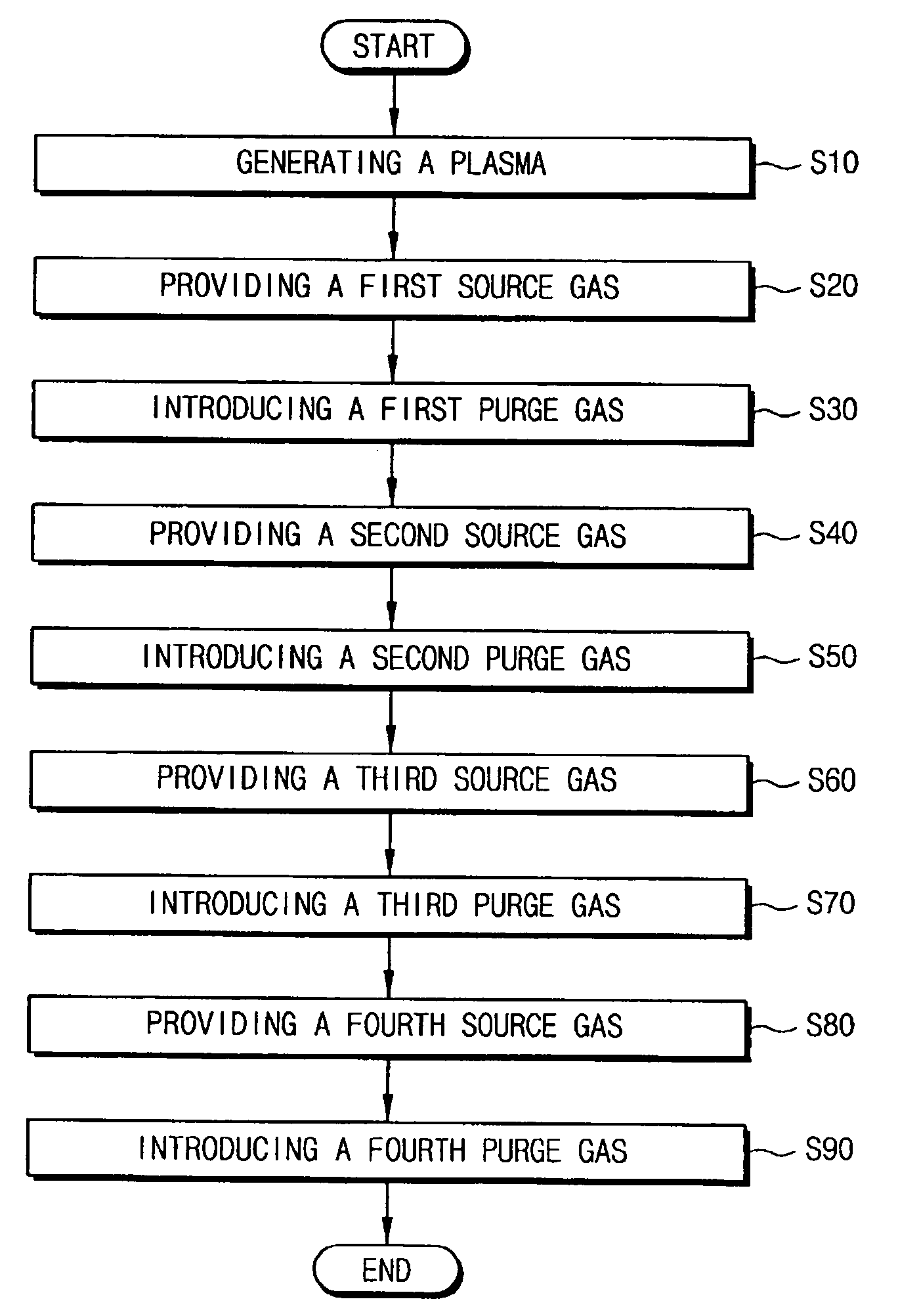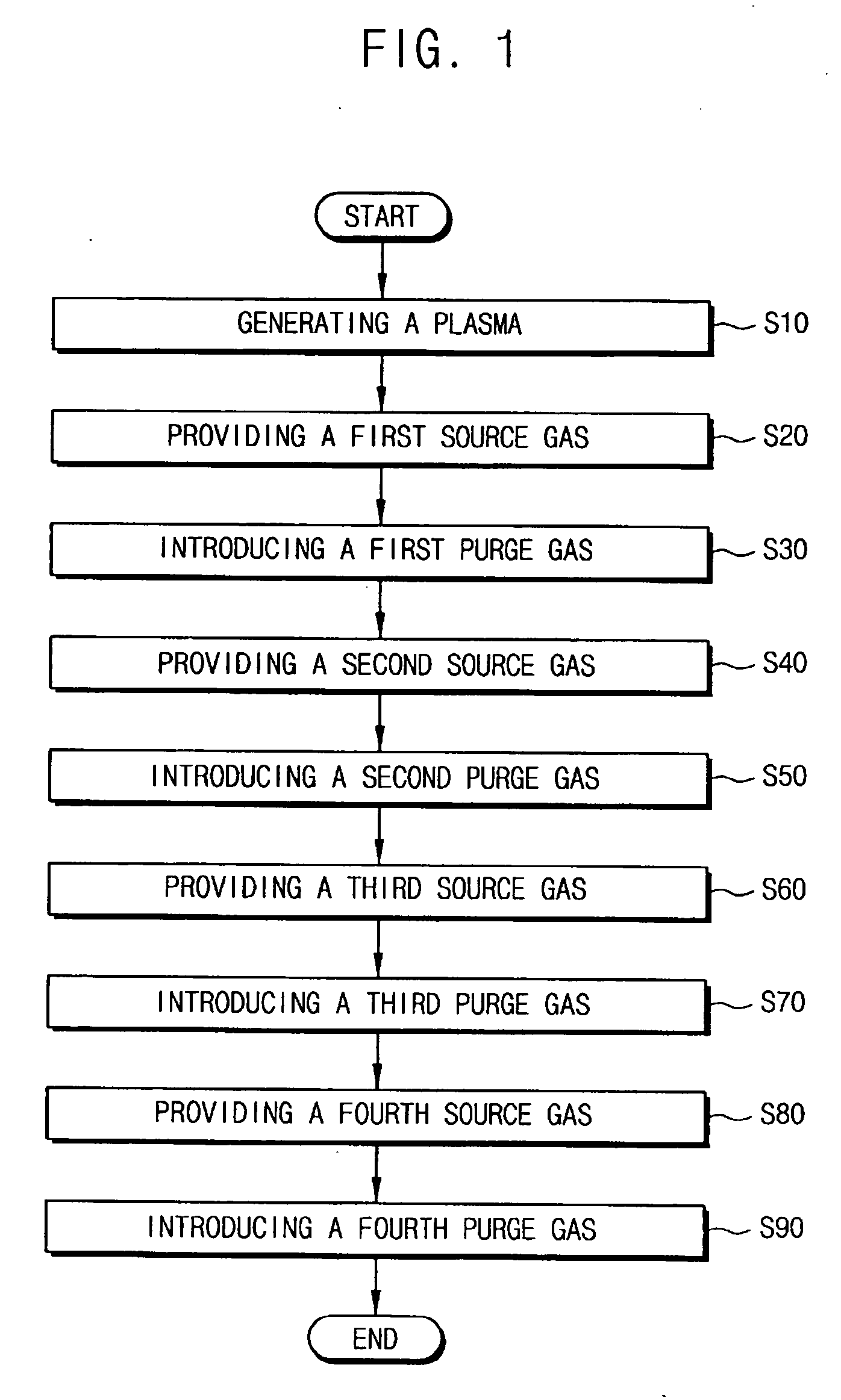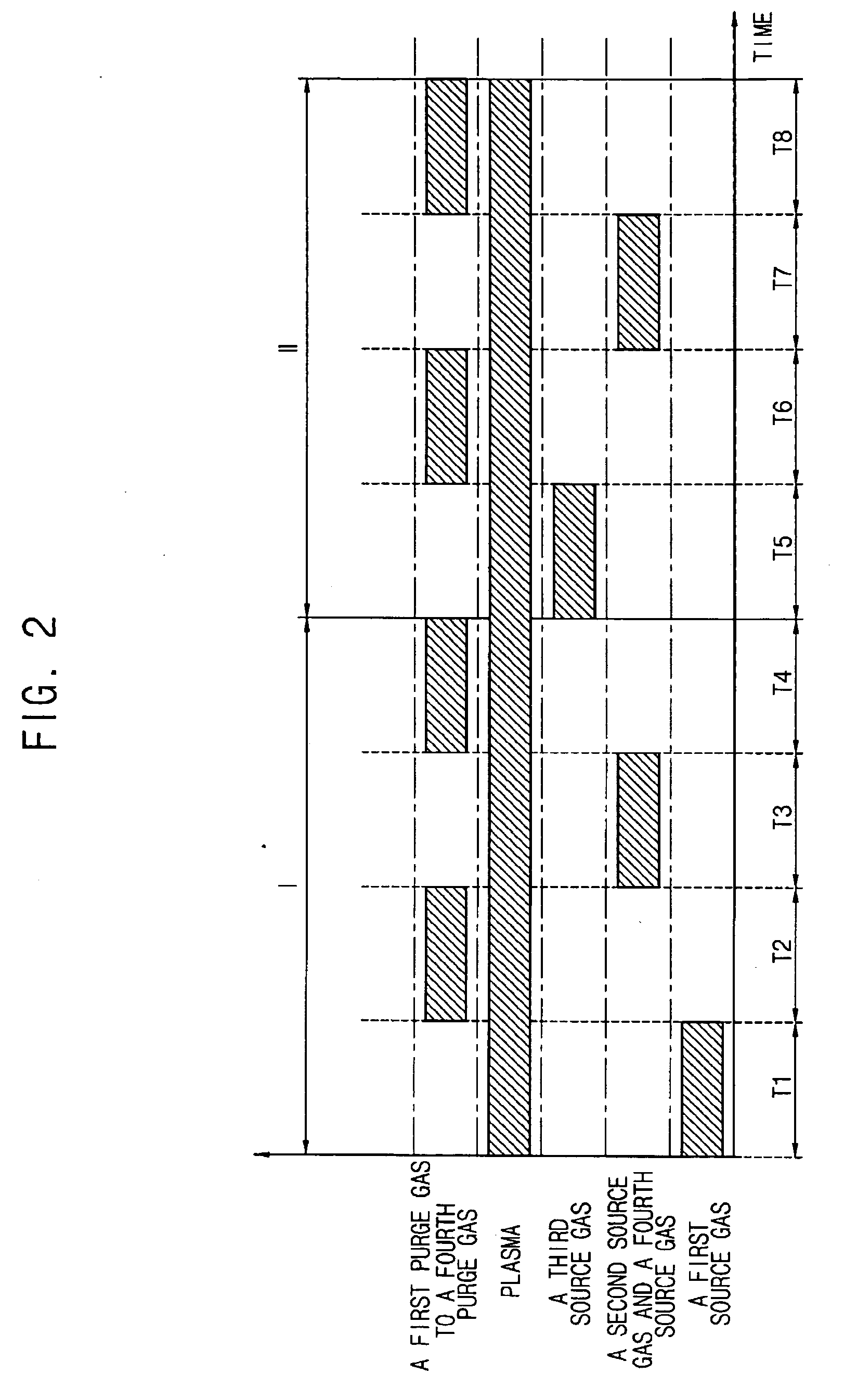Method of forming a phase changeable material layer, a method of manufacturing a phase changeable memory unit, and a method of manufacturing a phase changeable semiconductor memory device
a semiconductor memory and phase changeable technology, applied in the direction of solid-state devices, coatings, chemical vapor deposition coatings, etc., can solve the problems of difficult to precisely control the composition ratio, the electrical characteristics of the phase changeable material layer deteriorate, and the growth rate of the phase changeable material layer
- Summary
- Abstract
- Description
- Claims
- Application Information
AI Technical Summary
Benefits of technology
Problems solved by technology
Method used
Image
Examples
example 1
[0121] After providing a first source gas including germanium on a substrate for about 1.0 second, a first composite material layer was formed on the substrate by providing a second source gas including tellurium on the substrate for about 0.2 seconds. A third source gas including antimony was provided on the first composite material layer for about 0.4 seconds, and then a second composite material layer was formed on the substrate by providing a fourth source gas including tellurium on the first composite material layer for about 0.2 seconds. Thus, a phase changeable material layer including germanium, antimony and tellurium was formed on the substrate. A concentration ratio of germanium, antimony and tellurium in the phase changeable material layer was about 33.3:13.037:52.7, respectively.
example 2
[0122] After providing a first source gas including germanium on a substrate for about 1.0 second, a first composite material layer was formed on the substrate by providing a second source gas including tellurium on the substrate for about 0.3 seconds. A third source gas including antimony was provided on the first composite material layer for about 0.4 seconds, and then a second composite material layer was formed on the substrate by providing a fourth source gas including tellurium on the first composite material layer for about 0.2 seconds. Thus, a phase changeable material layer including germanium, antimony, and tellurium was formed on the substrate. A concentration ratio of germanium, antimony, and tellurium in the phase changeable material layer was about 26.9:15.1:56.3, respectively.
example 3
[0123] After providing a first source gas including germanium on a substrate for about 1.0 second, a first composite material layer was formed on the substrate by providing a second source gas including tellurium on the substrate for about 0.4 seconds. A third source gas including antimony was provided on the first composite material layer for about 0.4 seconds, and then a second composite material layer was formed on the substrate by providing a fourth source gas including tellurium on the first composite material layer for about 0.4 seconds. Thus, a phase changeable material layer including germanium, antimony and tellurium was formed on the substrate. A concentration ratio of germanium, antimony and tellurium in the phase changeable material layer was about 21.59:14.5:61.9, respectively.
PUM
| Property | Measurement | Unit |
|---|---|---|
| Temperature | aaaaa | aaaaa |
| Temperature | aaaaa | aaaaa |
| Time | aaaaa | aaaaa |
Abstract
Description
Claims
Application Information
 Login to View More
Login to View More - R&D
- Intellectual Property
- Life Sciences
- Materials
- Tech Scout
- Unparalleled Data Quality
- Higher Quality Content
- 60% Fewer Hallucinations
Browse by: Latest US Patents, China's latest patents, Technical Efficacy Thesaurus, Application Domain, Technology Topic, Popular Technical Reports.
© 2025 PatSnap. All rights reserved.Legal|Privacy policy|Modern Slavery Act Transparency Statement|Sitemap|About US| Contact US: help@patsnap.com



